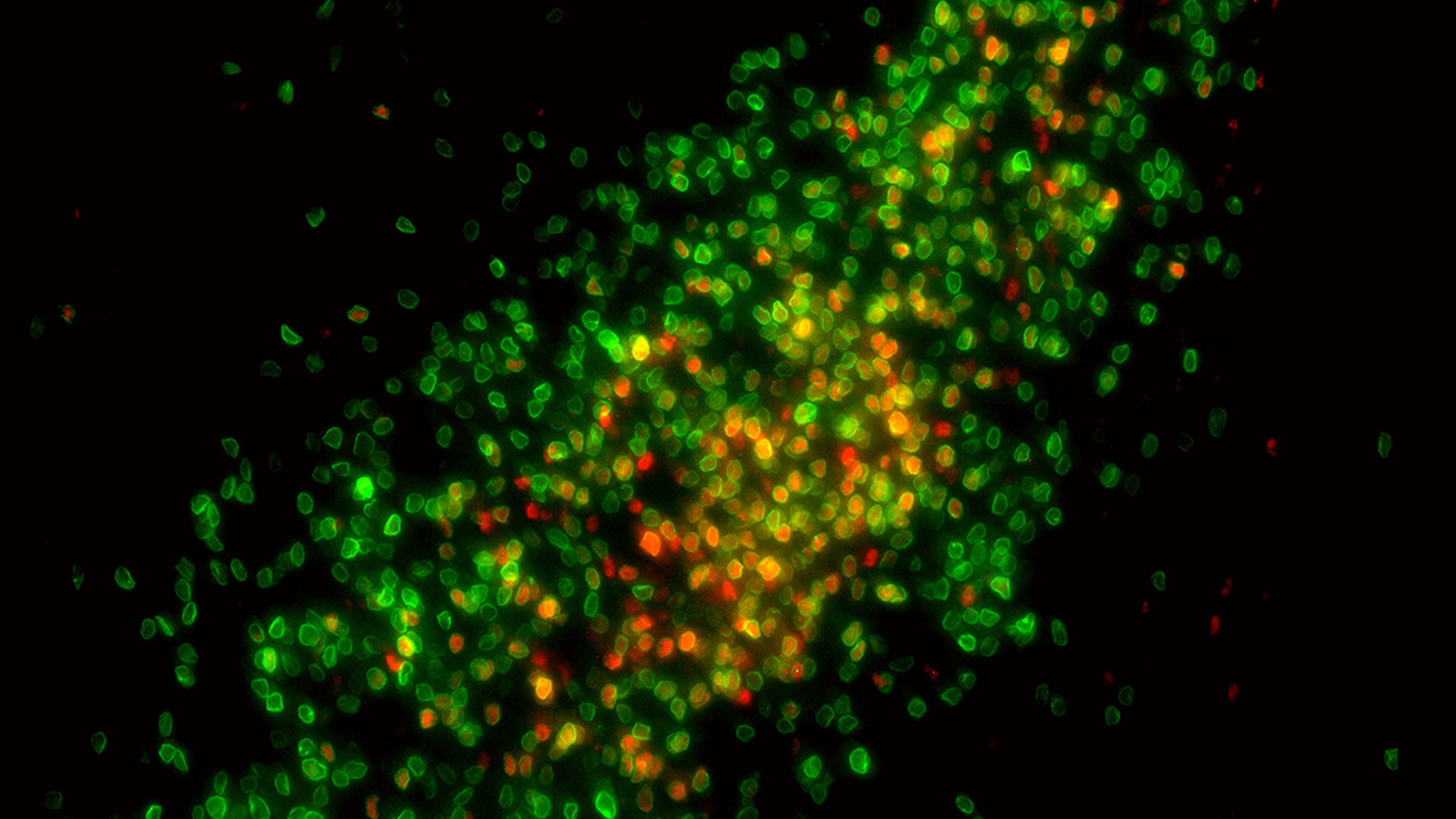Sex hormones play an important role in shaping an animal’s behavior, and their influence starts early. Early-life hormonal surges help shape the developing brain, establishing circuitry that will influence behavior for a lifetime.
Hundreds of genes in the brain fall under the control of estrogen. Fluctuating levels of the hormone cause shifts in mood, energy balance, and behavior throughout life, in addition to sculpting developing neural circuits early on. These effects occur when activated estrogen receptors sit directly on a cell’s DNA to turn genes on or off.
Cold Spring Harbor Laboratory Assistant Professor Jessica Tollkuhn, graduate student Bruno Gegenhuber, and their colleagues, have been mapping exactly where estrogen receptors latch onto DNA inside mouse brain cells. They’ve looked at both males and females and compared the brains of adults to the still-developing brains of young pups. In the journal Nature, they report on the hormone receptor’s targets in the brain and show that estrogen sets up physical differences in the brains of males and females during development.
Tollkuhn explains that estrogen is present in the brains of both males and females: some neurons make it themselves out of testosterone. In male mice, estrogen generated through a surge of testosterone that is released soon after birth shapes developing circuitry. As a result, certain brain regions are larger and contain more cells in males than they do in females—a difference that affects a range of behaviors in adulthood, including mating, parenting, and aggression.
“There’s this critical period when the brain is developing and wiring up that it has to get this input in order to make these permanent changes in the brain wiring. This is a transient surge, but it seems to have extremely long-lasting effects on brain development.”
Tollkuhn’s team examined where estrogen receptors landed after this hormonal surge, focusing on a brain region called the BNST, which is larger in males than females in both mice and humans. They found a host of genes that were under estrogen’s control, including many involved in neurodevelopment and neuronal signaling. And although estrogen itself remains in the brain for only a few hours, it seems that the hormone-controlled genes remain active for weeks.
Now that they know what genes estrogen is targeting in the brain, Tollkuhn’s team plans to explore exactly how those genes mediate the hormone’s diverse effects on brain development, behavior, and disease.
Written by: Jennifer Michalowski, Science Writer | publicaffairs@cshl.edu | 516-367-8455
Funding
Stanley Family Foundation, National Institutes of Health, Simons Foundation
Citation
Gegenhuber, B., et al., “Gene regulation by gonadal hormone receptors underlies brain sex differences”, Nature, May 5, 2022. DOI: 10.1038/s41586-022-04686-1
Principal Investigator

Jessica Tollkuhn
Associate Professor
Cancer Center Member
Ph.D., University of California, San Diego, 2006

